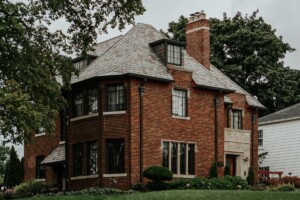‘Tis the season of anticipation and planning for Cleveland real estate agents, and nothing pairs better with a small glass of eggnog than a meeting with the ghosts of housing past, present and future.
As thousands of Clevelanders spend their first holiday seasons in new homes, we close our books on 2016 and look forward. So what’s in store for Cleveland housing in 2017?
1. Downtown focuses on ownership
Our city’s center saw a Cavs championship and epic parade, the Tribe’s World Series appearance and the national spotlight hosting the RNC. The movement to downtown living is real, but what about homeownership as a move toward long-term stability? According to the Downtown Cleveland Alliance, 880 of 7,098 housing units downtown are owner-occupied and only 19 units sold in Q3 2016 compared to 90 the year prior. This is what makes celebrated events like Heinen’s moving into the Cleveland Trust Building such a beacon for future development for housing, not just entertaining. Most millennials and empty-nesters will go the renting route due to concerns about job security, lifestyle flexibility and an uncertain housing future. But for the momentum to sustain as something more than a “cycle,” this crew needs to start owning pieces of Cleveland. Smart money in 2017 knows this, city officials and DCA know it and the push for homeownership will start next year. The first piece may be builders providing more options for buyers to choose from.
2. Millennials make the rules
As more millennials move downtown in “The Fifth Migration,” the underlying “walkability” and lifestyle motives move buyers into the inner-ring suburbs, notably Lakewood and Cleveland Heights. This demographic helped push both cities to five year highs in median sale price, record home sales in Cleveland Heights and more than a third of Lakewood homes selling for over list price. This is the “crazy” market you heard about this year: fast moving and hyper competitive between those wanting to move closer to the city and those being priced out of the city by increasing rental rates, among other things. In 2017, we’ll continue to see lines extending outside the door at open houses in Lakewood and West Park, multiple offers on anything priced between $150,000 and $250,000 and an even stronger push than 2016 toward on-demand real estate services in a market that will move faster than ever before.
3. Our new president
The long-term effects of the Trump administration in the U.S. real estate market will only begin to be felt in one calendar year, but we’ve already seen a small spike in interest rates and that’s a trend that is expected to continue. According to Redfin’s chief economist Nela Richardson, “The Trump administration ushers in three major policies that could significantly affect the long-term trajectory of the U.S. real estate market: infrastructure spending, tax cuts and changes to immigration policy.” As these policies take shape during his first year in office, we’ll start to see the immediate and long-term effects on housing.
4. Interest rates don’t affect buyer psyche
In response to a Redfin survey in early November,the majority of homebuyers said that mortgage rates were “very important” or “important” in their decision to buy, but only 7.5 percent said they’d give up on their search if rates increased a point or more.
5. Prices outpace incomes
There are few really interesting storylines to play out in the next 12 months that will provide us with some answers about what kind of market this actually is: buyer, seller, bubble, etc. First up is job growth and wage increases in major cities, moving people toward markets like the Rust Belt and, yes, Cleveland. This trend has helped put us on the map, earning us titles like “America’s Hottest City.”
However, “the the percentage of homes in America’s largest cities that are affordable on the median income has declined the past two years and will continue to fall in 2017. Making things harder for people looking for affordable homes, a lot of homeowners who have lived in their homes for several years and might be thinking about moving won’t list their homes for sale this year. That’s because they are among the millions of homeowners locked into a mortgage rate below 4 percent,” said Richardson.
This leads to the second storyline and a carryover from 2016, there will be very low housing supply for first-time homebuyers to choose from in hot neighborhoods; The sellers stay in control. The last thing to watch out for in 2017 is the widening gap between the aforementioned “hot” neighborhoods and the cities/neighborhoods that aren’t experiencing growth, some of which were yesterday’s most desirable markets. A few to keep an eye on are Avon Lake, Avon and Solon.



























 United States
United States Canada
Canada